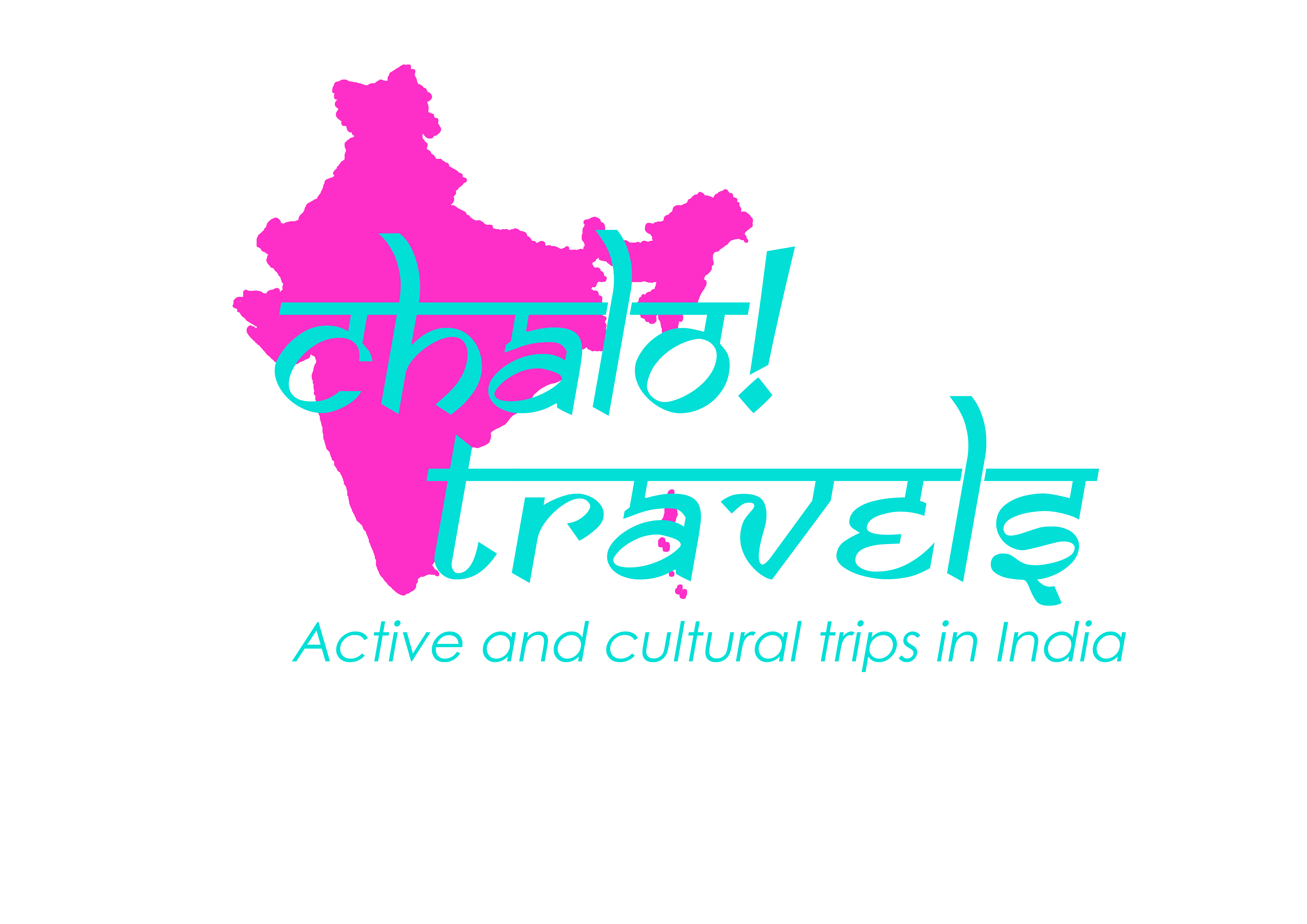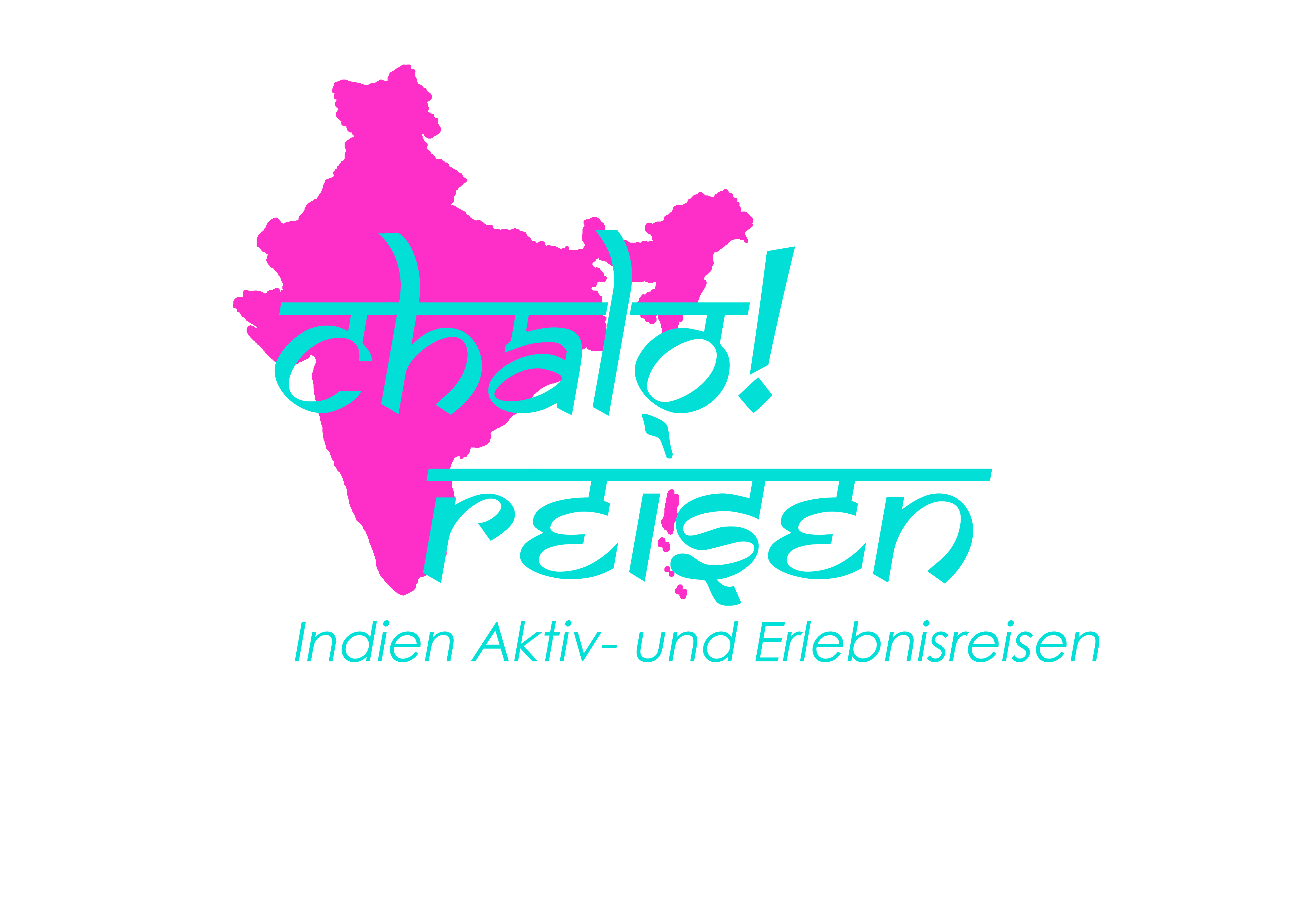- Sport & Abenteuer Reisen
- Reise Bausteine
- Trekking Reisen
Overview
The seven-day Goechala Trek in West Sikkim is one of the few treks we offer in the eastern part of the Indian Himalayas.
Although the trek, despite its name, does not go all the way up to the 4940 m high Goech Pass, it is well worth doing and even outshines some other grandiose treks.
The highlight of the trek: from the end point (4500 m) of the trek you have a magnificent view of the 8565 m high Kachenjunga – the third highest mountain in the world and the highest mountain in India. Here, in the midst of glacial ice and surrounded by countless other high peaks (Kabru 7353m, Pandim 6691 m) one feels very close to the ice and snow covered mountain giants.
Beyond that, the week-long trek has so much more to offer. It leads from the Buddhist influenced tranquil mountain village Yuksom (1700 m) all the way through the Kanchenjunga National Park.
One walks through the most different vegetation zones starting from deep forests, further through blooming Rodhodenron (in April and May), over pastures and barren high alpine landscapes further up to glacier ice.
Again and again you can enjoy views of high snow-covered mountain giants.
In total, the trek is about 90 km long. That it goes from the vantage point almost the same way back, is almost meaningless, one enjoys now the views in the other direction.
The individual daily stages are somewhat longer and you quickly gain altitude. In the camps, good acclimatization is the order of the day.
While it can be a bit hazy or rainy in the spring, the months from the end of September to December are a bit clearer, but even colder.
The trek is truly something for the eye and adventurer. The Goechala Trek is not a pleasure trek, but the weather conditions (cold, wind, snow) are often a bit harsh.
Increasingly, the tent trek is also gaining popularity among many Indians. Here we make sure that our trekking tours are slightly offset from the big group tours.
Optionally, you can also stay overnight in wooden cabins at the camps.
We will be happy to arrange travel to and from Yuksom, as well as overnight accommodation in Yuksom. The nearest airports/train stations are Bagdogra, Gangtok and Siliguri (about 5 to 6 hours away by car).
We recommend a day in Yuksom for sightseeing, as well as the drive via Darjeeling. Of course, a longer round trip in Sikkim, West Bengal or the north-eastern states of India is also possible. We are happy to advise.
Program
Day 1 Yuksom- Bakhim
DISTANZ: 12 km/ 6-7 hours; maximum height – 2720 meters
Today our trek starts! A hard climb leads us through a beautiful vegetation with magnolias, rhododendron and orchids and over two streams. There are also brown and black bears. Near a stream we will stop for lunch. Bakkhim consists of a small forest house and a few huts with Tibetan flags. We pitch our tents a little above in the forest. Overnight stay: Tent (-/M/A)
Day 2 Bakhim- Phedang
DISTANZ: 6 km/ 3- 4 hours; maximum height – 3745 meters
After breakfast we will wander through a dense forest to the former village of Tsoka. In the past, Tibetan refugees used to live here from cheese production and vegetable cultivation. By the authorities of the National Park people were resettled from the former beautiful village. Only an old monastery is preserved. We continue on a good path through Rhododendron forests. On the green pastures of Phedang we will build our camp. Here we have a spectacular view of the Himalayan mountains and will sleep at an altitude of 3745 meters to prepare for the next higher camps. Overnight: Tent (F/M/A)
Day 3 Phedang- Dzongri
DISTANZ: 5 km/ 3 hours; maximum height – 4050 meters
It goes steeply up to Deorali, one of the best viewpoints on the Kanchenjunga. From here it goes gently uphill and downhill to our camp in Dzongri. Here we will pause a little and then climb uphill for about an hour to the Dzongrila Pass (4417 m). From here we have a great view of the summits Rathong, Frey and Kang. From here we would continue towards Nepal, but we descend again to the camp.Overnight: Tent (F/M/A)
Day 4 Dzongri – Thangsing- Lamuni
DISTANZ 12 km/6-7 hours; Maximum height 4200 meters
Early in the morning we will go to the Dzongri viewpoint around the beautiful view of the Kanchenjunga mountain range at dawn. to enjoy. So early in the morning it will be cold, but the effort is worth the effort, the view of the highest mountains at sunrise is unique! We will return to the camp, warm up with a hot cup of tea and then trek to Thangsing after breakfast.
It will be a leisurely hike with some descents. A little steeper down it goes to the Rangit River. We cross the river over a wooden bridge and then climb uphill through dense Rhododendron forest to the green Thangsing pasture. Overlooking the Pandim summit and other mountains, we will have our lunch and then hike for another two hours to our nearest campsite. Overnight: Tent (F/M/A)
Day 5 Lamuni- Goechala- Kockchorung
DISTANCE 16 km/ 7-8 hours; Maximum altitude 4500 meters
Today is a special day: we will go to our highest point of the trek, high up to 4500 meters to the viewpoint of Kachenjunga. We start early in the morning so that we can see Kachenjunga shining in the first rays of the sun. On the way we will also pass the beautiful azure Samiti Lake. Throughout the ascent, we will have a spectacular view of the glaciers and surrounding high mountains, including Mount Pandim (6691 m), which appears very close. Later we go back on the same way to Kockchorung at 3700 m . Overnight: Tent (F/M/A)
Day 6 Kockchorung- Choka
DISTANCE: 14 km/ 6 hours; Maximum altitude 3050 meters
First it goes through dense Rodhodendron forest sometimes up and sometimes down to Phedang. Won here we descend to in Choka, where we will spend our last night in the tent. Today it is once again a fascinating view of the high mountain world to enjoy. Overnight: Tent (F/M/A)
Day 7 Choka- Yuksom
DISTANCE: 14 km/ 06 hours; Maximum altitude – 1780 meters
Our last day of trekking with the end in Yuksom. Here a hotel room with a soft bed and a hot shower is waiting for us. Overnight: Hotel (F/M/-)
Included Services
- Guide, cook, helper, pack horses or yaks
- Tent, sleeping bag, mattress
- Full catering
- Trekking permit
Arrival and departure YuksomHotel overnight stay YuksomLoad horses for personal luggage (ca 50 €)VisaTip
Highlights
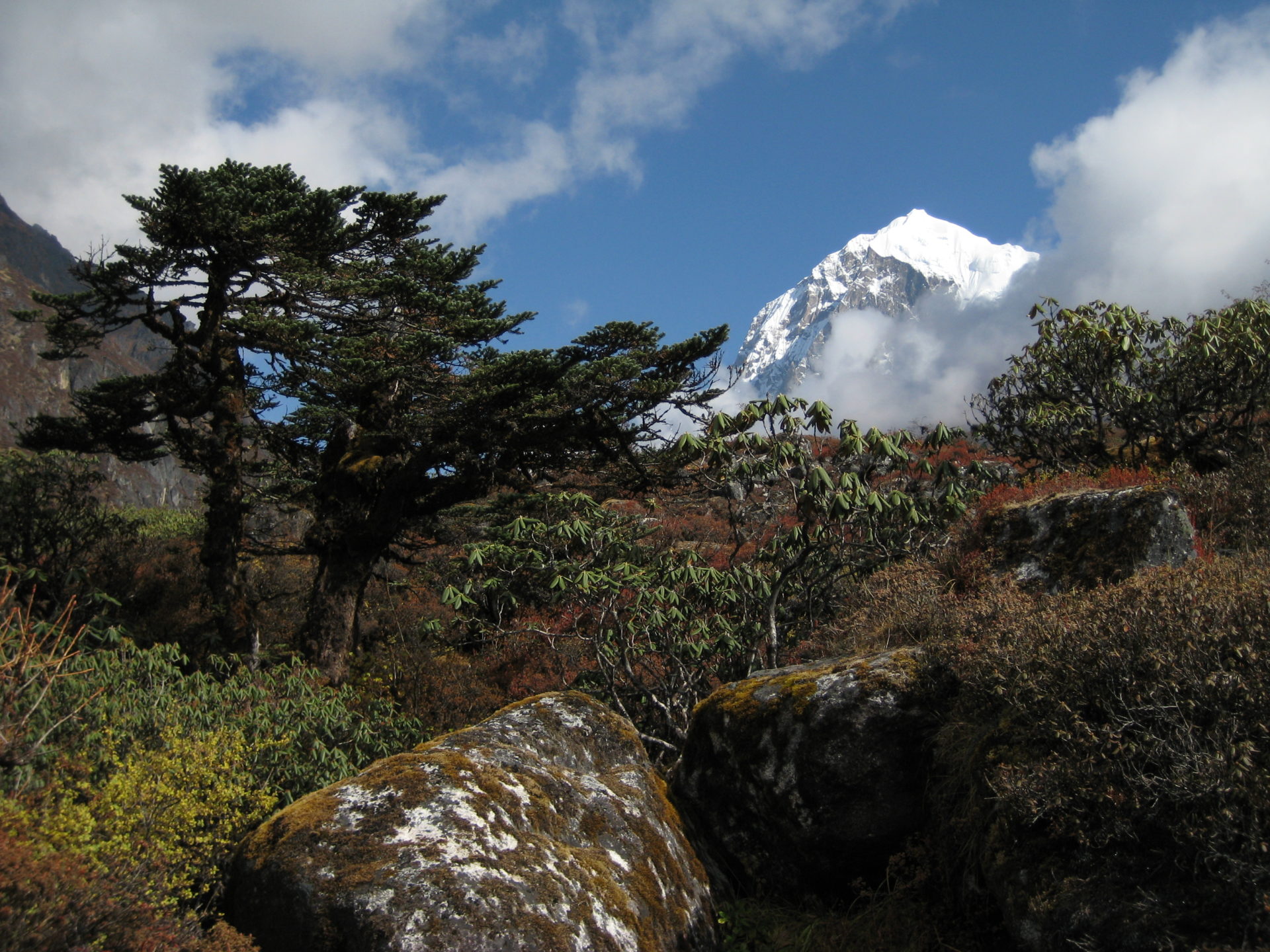
Sikkim Goechala Trek 
Sikkim 
Goechala Trek Choka 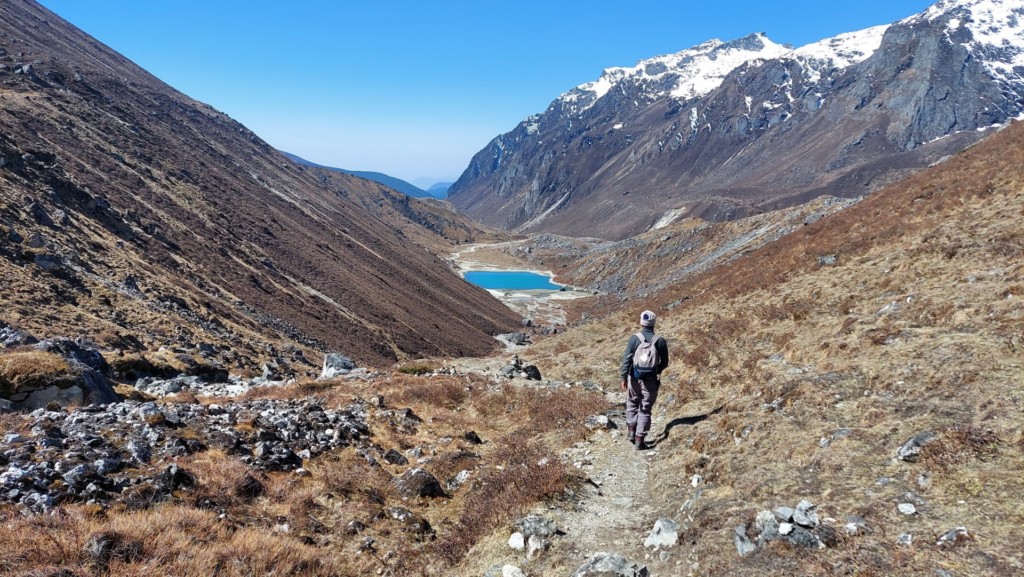
Lake Samiti 
Viewpoint Trek 
Camp Goechala Trek 
Goechala Trek 
Goechala Trek 
Goechala Trek 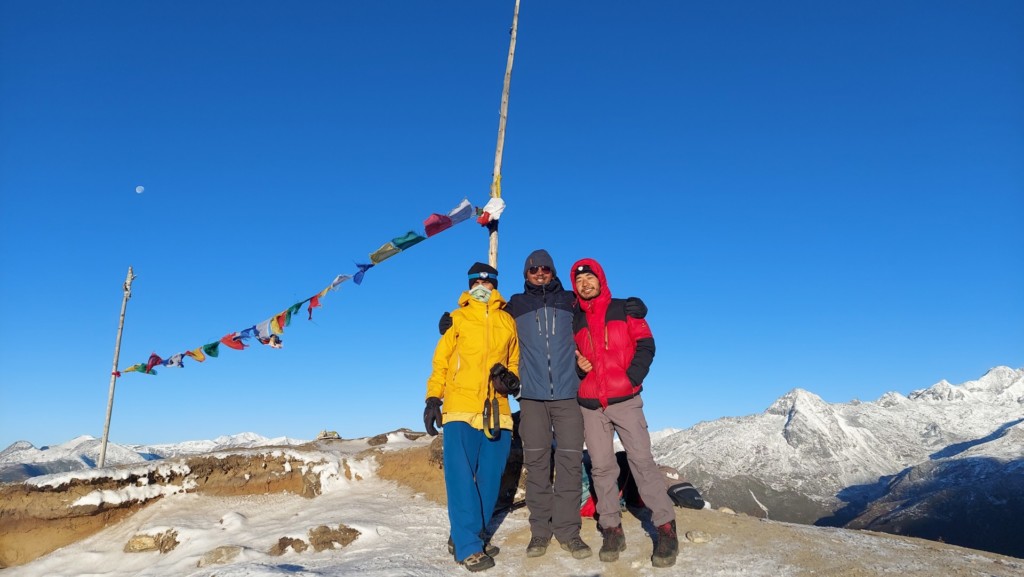
Dzongri viewpoint 
Early start to the viewpoint 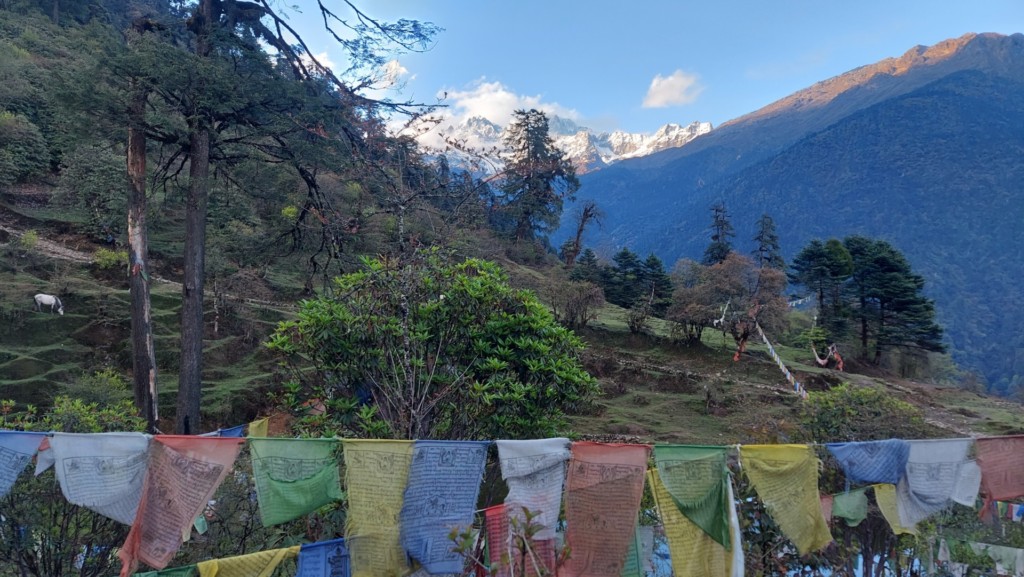
Choka 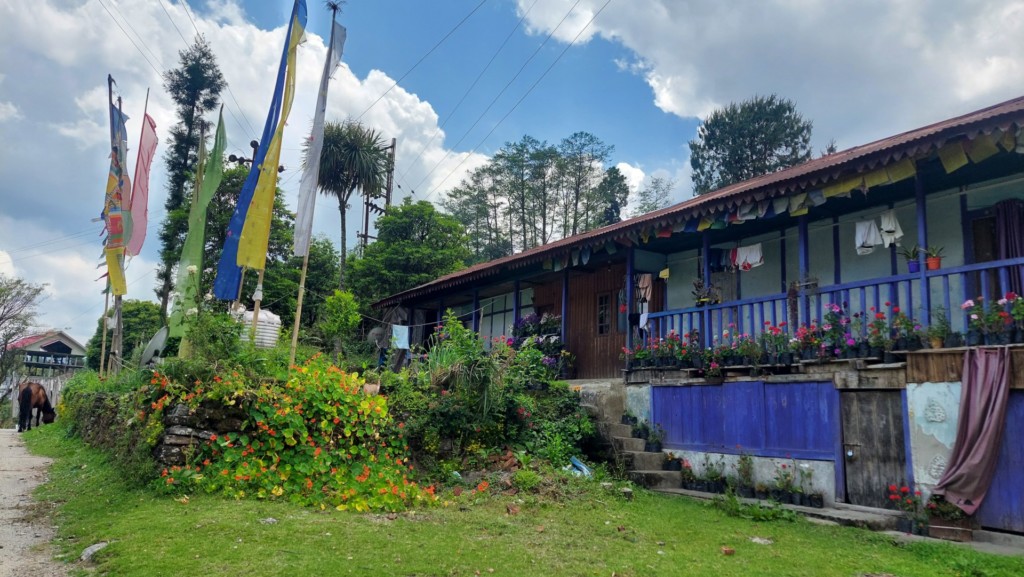
Yuksom 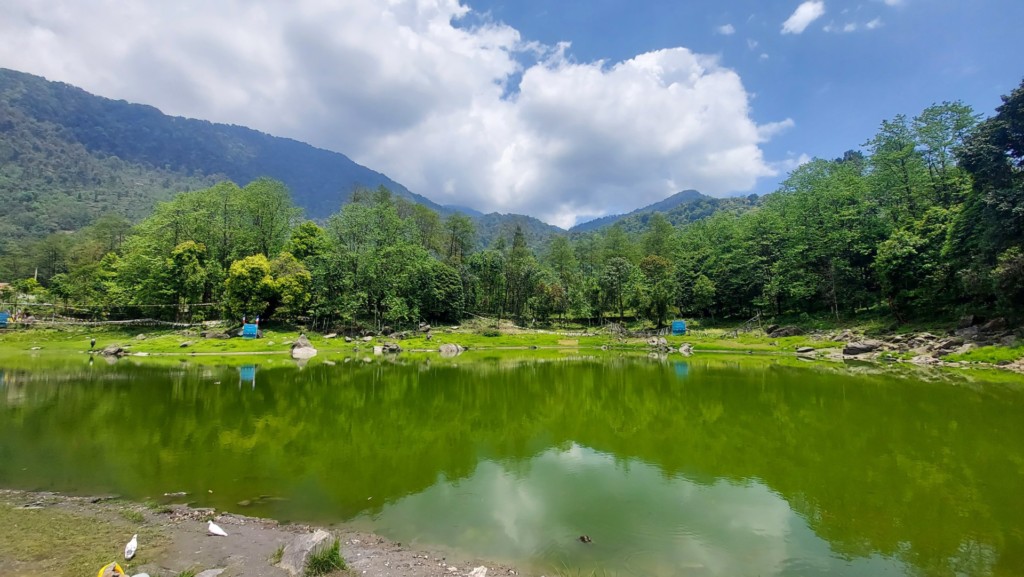
Yuksom 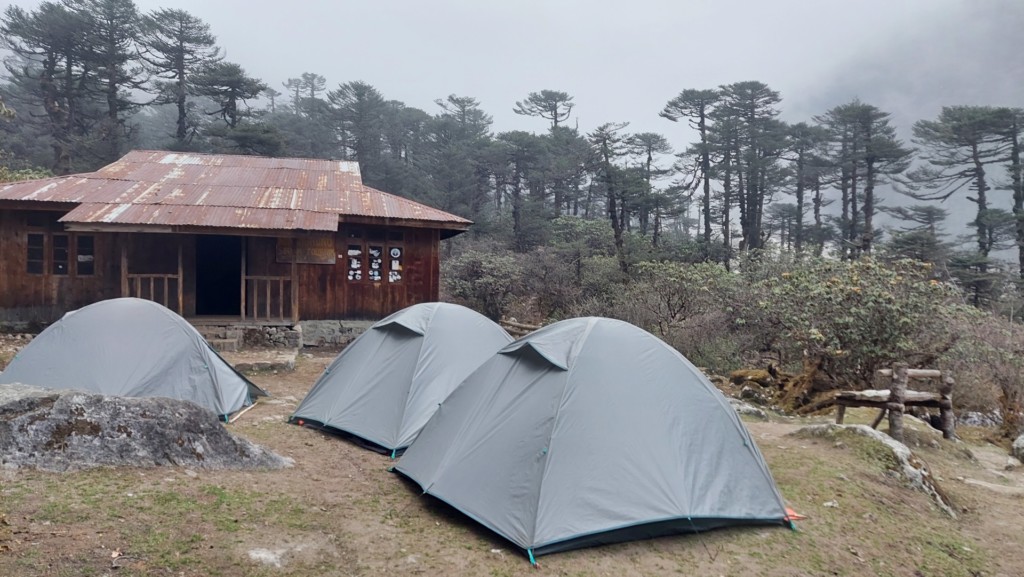
Camp 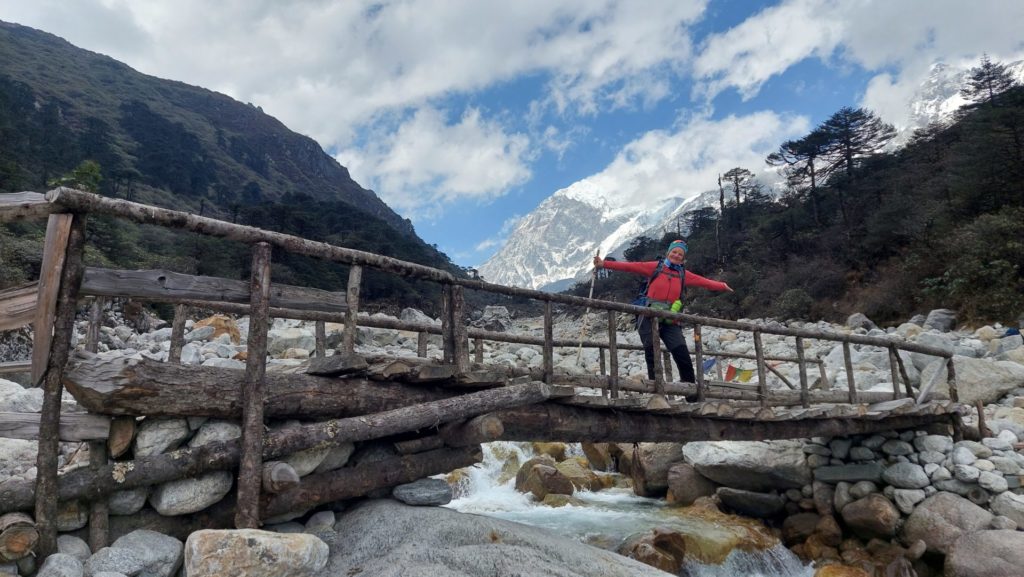
Goechala Trek
Prices and Dates
The best time to travel is october to December and also March to May, although there may still be plenty of sniffin in spring.
Prices:
from 2/3 participants 700 € per person
from 4/5 participants 650 € per person
from 6 participants 500 € per person
Travel Info
Requirements
Physical fitness is a prerequisite for the intense seven-day trek high up to 45000 meters
Information about trekking in the Indian Himalayas with Chalo! Travel
Mountain guide and trekking team
On all our treks we have at least one (for larger groups of 6 participants or two) trained local mountain guides. Our mountain guides have all completed at least the Indian mountaineering training, many of them have also taken part in the advanced courses.
You are familiar with the trekking routes and know the terrain excellently. Our mountain guides all speak English.
In addition, there is a local team consisting of a cook (if the group consists of only two participants, the mountain guide also takes over the tasks of the cook), helpers, horsemen with horses or Nepalese carriers, depending on the type of trek.
All our team members have been working with us for years, are very friendly and always strive to provide our guests with a great trekking experience. Their English is rather mediocre or non-existent, but this is not necessarily a hindrance to communicating with them.
Trekking routes
The trekking routes are designed for the skills of our guests and are all feasible for a person with a good fitness level, unless otherwise mentioned. The daily routes are between five and eight hours long (with breaks) and an average increase of around 500-800 metres of altitude is completed.
In between, rivers may have to be crossed or crossed. The paths are partly well developed, but sometimes also almost non-existent. On our trekking routes there are hardly any villages in between, so we will take enough food for the whole tour.
On our treks you can cross passes, snow or glaciers. On steep slopes, we have safety equipment with us.
Daily routine (Depending on the length and intensity of the trek, the times may vary)
7: 00 Get up with tea
7:30-8:30 Breakfast
7:00-9:30 a.m. Dismantling of the camp
8:00- 9:30 Start Trek
13:00 Lunch on the way
15:00-17:00 Arrival at the camp and camp construction
15:30-17:30 Snacks
19:00 Dinner
Altitude and altitude sickness
Altitude sickness is a very important topic that should not be underestimated, especially during our trekking tours in the Indian Himalayas. At altitudes above 3500 m, our body has to slowly get used to the low air pressure, which also causes less oxygen to enter our lungs. The first signs of altitude sickness are headaches, which are accompanied by dizziness, nausea, insomnia and loss of appetite. It becomes problematic when water accumulates in the lungs and brain and edema occurs. Then only the immediate descent to lower altitudes will help. To prepare for the highs on our treks, we will either spend a few nights at high altitudes before the trek or slowly ascend during the trek to acclimatize. If we notice that there are problems with our guests (each person is otherwise able to acclimatize, regardless of age, gender and fitness level), it may happen that either the entire tour group or the participant descends/returns with a team. In addition, it makes sense to take an emergency drug for altitude sickness. For this, it is best to consult the pharmacy or the travel doctor. For certain treks we will also have oxygen with us.
Luggage
Each trekking participant is responsible for his own clothes and personal belongings. Depending on the trek, we are either on the road with horses or carriers. If we have load horses, one bag per participant can be loaded onto the horse. In the case of treks with carriers, all personal luggage must be carried independently. Tents, sleeping bags, mattresses and food are carried by our porters.
For trekking tours with horses, a day backpack with space for the lunchbox, a water bottle and warm overcoat clothing should be taken with you. Here to the complete packing list for our trekking tours.
Packing list for trekking tours
- Sleeping bag at least -10 ° C
- large backpack or soft tote bag so that the pack animals can carry the luggage
- Small backpack for the day approx. 30-40 l with rain cover
- Flashlight / headlamp
- 2 refillable water bottles
- Walking sticks
- Passport and passport copy
- Camera with spare batteries and memory card
- Headgear as sun protection
- Good sunglasses
- Cap
- Scarf, buff
- gloves
- Windpants
- Trekking pants
- Functional underwear long
- Walking shoes
- Socks thick and thin
- Sneakers, sandals and / or slippers
- Windbreaker
- Warm jacket
- Fleece pullover / jacket
- Tshirts
- Sun cream, lip balm min. Protection 40
- Fat cream
- Water purification tablets
(boiled and filtered water is provided) - own medication for headaches, nausea, digestive problems, colds)
- Blister plasters and bandages
- own hygiene article
- Toilet paper
- Hand disinfection
Meals
During the trek there will be a vegetarian full catering. Water is either boiled or we have a water filter with us.
Breakfast (daily selection):
- Coffee/Tea
- Oatmeal porridge/muesli/cornflakes/Indian porridge
- Indian breakfast
- Sliced fruit/vegetables
Lunch (mostly lunchbox), sometimes warm in the camp
- Sandwiches/Indian (rice, chapati, vegetables)/potatoes
- Juices
- Chocolate
- Fruit
Snacks
- Tea/coffee
- Cookies
- French fries/Indian snacks
Soup
Dinner (depending on the length of the Trek mix of Indian/Chinese/Continental)
- Vegetable dish
- Lentil dish
- Rice/noodles
- Chapati
- Salad
- Dessert
Accommodation and camp
We have very comfortable and spacious two-man tents. Our mattresses are practical but simple if there are problems with sleeping on hard surfaces, please take your own mattress with you or order from us. Our sleeping bags are freshly washed and have a very good quality with comfort zone up to -5°C/extreme zone up to -20° C. It is recommended to bring personal indoor sleeping bags.
In addition, we have a spacious dining tent with tables and chairs, a kitchen tent for the team and a toilet tent. For treks up to 4 people, the kitchen tent can also act as a dining tent at the same time.
For trekking tours with porters, we will take our smaller, lighter tents with us and do without a toilet tent.
Weather
In the Himalayas, temperatures fluctuate widely. While it can get warm up to 25°C during the day and the sun is not only warming, but also very intense (sun protection is a must), it can also cool down significantly below the minus-grade at night, especially in the months end of September and October, as well as in June. There may also be weather changes with snow on the passes.




